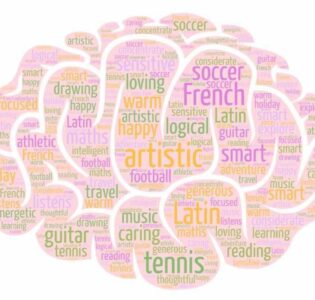Coding in the Classroom
Joanne Blannin, University of Melbourne
Soon parents around the country will start receiving reports that assess their child against the new Digital Technologies curriculum. Every child from the first year of school to Year 10 will be working on this curriculum, although their skills will not be formally assessed until the end of Year 2 (7-year-olds).
Many are no doubt perplexed by language that directs their children to become, “confident and creative developers of digital solutions through the application of information systems”. Should we be asking whether the government is seeking to create an entire generation of computer programmers?
Today’s students will need to confidently navigate a very different future – a digital, online world with a new language and approach to work and learning. As teachers, parents and leaders come to grips with the demands of this new curriculum, it is important to reflect on why there is a global shift towards teaching students about digital technologies themselves, rather than just how to use particular software or devices.
Developing technological fluency
When we log into the Internet, whether through Facebook, Instagram, email or another tool, we enter spaces that have been created by people. Every online space has a unique culture, purpose and accepted way to interact. These are key aspects of technology use that we need to provide in schools.
We would not send our students off to a foreign land and expect them to function as easily as they do at home. They would need to know the basics of the language, how to interact appropriately with others, how things work and generally how to act in the new culture. Similarly, we shouldn’t expect students to be fluent users of digital or online technologies simply because they play games and can search the Internet.
Young people need to know not just how to use digital technologies, but also how they work.
Fluency with digital technologies means understanding how computers work, how they might be used to meet our needs, how we might repair or modify them and yes, even how to write computer programs to control them. This is a new type of fluency for the 21st Century.
The new curriculum
The new Digital Technology (DT) curriculum aims to develop confident and creative developers of digital solutions. There is a strong focus on creative technology use through its three learning strands: Digital Systems, Data and Information, and Creating Digital Solutions.
These three distinct strands are also connected to your child’s current learning areas. The digital systems strand has similarities to the patterns and systems identified by geographers, biologists and mathematicians. Data and information are equally used in mathematics and art, as data is created, displayed and understood.
Finally, digital solutions to problems are already part of many students’ learning. From an app that tracks litter in the school yard to an augmented reality walking trail that preserves the local history, solving problems is as much a thinking skill as it is a digital skill. The new curriculum recognises that specific ways of thinking about problem solving are necessary for our country’s future success.
Preparing students for their future, not ours
When today’s students leave school, they will enter a world that is vastly different to the one we entered after our schooling, even if it was just 10 years ago. Nearly every job today requires some knowledge of digital technologies.
Technology has infiltrated our homes as well as our schools. In 2016, the Australian Bureau of Statistics reported that, on average, a household in Australia has six internet-connected devices. If there are children under 15 living in the house, that number increases to seven devices.
This increased technology use at home is changing the way we think about technology users and the way in which we should be teaching technological skills. Although certain language continues to be used by the mainstream media, there is no longer a clear, generational division between the so-called ‘digital natives’ and ‘digital immigrants’.
Indeed, many of us might know older adults with an excellent understanding of technology. Perhaps you know someone like my 80-year-old mother-in-law who repairs her own computer or, at the other end of the scale, the 23-year-old university graduate who cannot seem to print from her laptop.
Labelling all adults over 25 as digital immigrants and all students as digital natives is no longer helpful language. Today’s students have varying abilities with technology, but each student needs ‘digital fluency’ so they can take advantage of new ways to learn and future work opportunities.
How are other countries tackling this challenge?
In 2013, the United Kingdom introduced a coding curriculum for all school students. This curriculum challenges students to think through problems in a logical and sequential way. It focuses on coding as a core learning area and as a way to develop important problem-solving skills in their students.
The USA has taken a different approach. Without a country-wide digital curriculum, a number of organisations have been established to support computer programs in schools. Code.org is a website-based organisation offering coding lessons for everyone, through a self-teaching, online environment.
Creativity and critical thinking are important skills for students to learn, in preparation for the future workplace. Championing that “every student in every school should have the opportunity to learn computer science”, it uses endorsement from well-known figures such as former President Obama, actress Jessica Alba and Noble Peace Prize winner Malala Yousafzai.
This use of non-coders appeals to a broad audience and demonstrates the increasing push to incorporate computer and coding skills into schools – a push that is now being experienced in Australia, through our new Digital Technologies curriculum.
Changing global demands for workplace skills
This increased engagement with coding comes in response to the fact that today’s students will be seeking work in a globally-connected, digital world.
As the average job becomes more collaborative, more global and perhaps more transient, there is a clear shift in the types of skills that are being sought by companies around the world.
These skills might be considered ’new’, however many have been discussed since the beginnings of Greek philosophy. They are often interchangeably labelled, ‘21st Century Skills’, ‘Enterprise Skills’ or ‘Soft Skills’, and usually include creativity, communication, collaboration and critical thinking skills (the 4C’s). As relevance of these skills in the workplace increases, so too does the need for students to learn how to use the 4C’s to be successful.
The new Digital Technology curriculum is not about creating a generation of computer programmers. It is about ensuring that every possible door is open to our students when they leave education to enter the workforce. Education needs to prepare students for their fast-changing, unpredictable and exciting futures. As the new curriculum is officially rolled out across Australia this year, I have strong hopes that this will be achieved.
This article was first published on Pursuit. 20 April 2017. Read the original article.
You can be one step ahead with parenting and technology by following her blog: The Tech-Know Parent.




